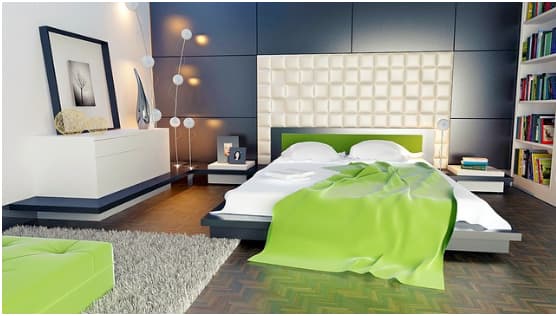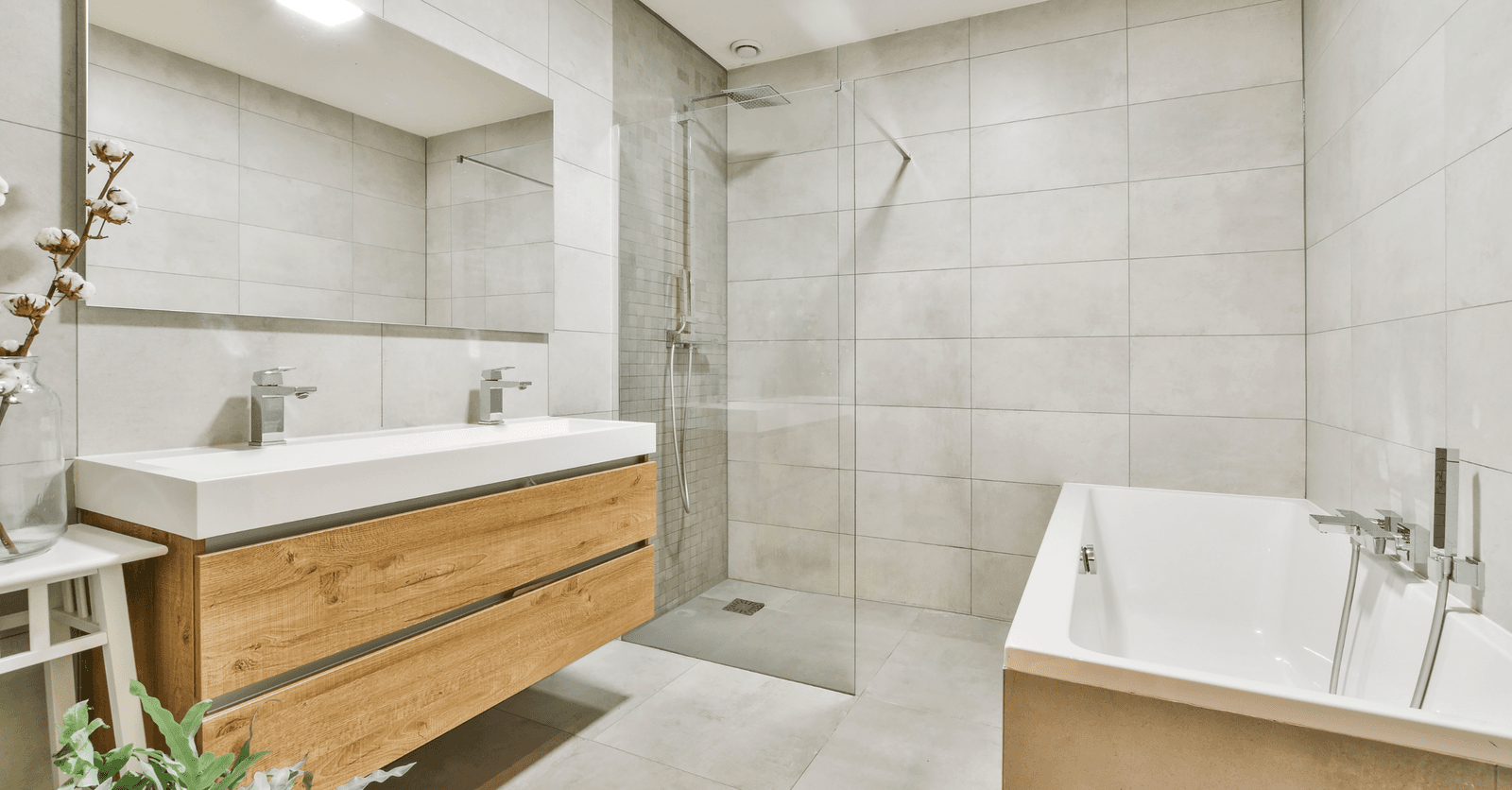Tadelakt - What to Know About This Traditional Moroccan Plaster
By Editorial Team
Updated on December 4, 2024

Tadelakt is a natural, lime-based Moroccan plaster known for its waterproof properties and smooth, glossy finish. Historically, it was designed for hammam walls and water cisterns, distinguished by its seamless aesthetic. Whether used in a bathroom or kitchen, tadelakt unites aesthetics with durability. Its silky render and natural tones make it a sought-after choice for homeowners seeking a glimmer of traditional glamour paired with modern home decor.
What makes it so unique? How is it made and applied? This article delves into everything you should know about this hand-crafted plaster surface.
What Is Tadelakt Plaster?

Rooted in Morocco: The History Behind Tadelakt
Tadelakt plaster was created in Morocco and has been used for centuries as a waterproofing agent used for surfaces, such as water storage containers and hammams. Made with Marrakech limestone and finished with black soap, tadelakt is applied according to a hand-crafted method, which gives it a smooth, refined look. Tadelakt is hand-worked and every application is unique, reflecting the talent and experience of Moroccan artisans.
Over time, tadelakt was refined, finding its place in interior and exterior decoration, most appreciated for its authenticity and natural-looking allure. Nowadays, it’s used in private residences and commercial spaces, pairing elegance and tradition, perfectly meshing with modern decors while preserving the core purity of natural materials.
Tadelakt Composition
Tadelakt is made with several key ingredients, giving it its unique properties. Each ingredient plays a part in the quality and look of this lime-based plaster.
Natural, Lime-Based Plaster
Tadelakt is primarily made with Marrakech lime derived from kiln-baked and finely ground limestone, giving it its resistant and adherent properties. Said lime is just as valued for its moisture-absorbing capacity, resulting in a material that’s perfect for water-prone surfaces, such as shower stalls.
Natural Pigments
Natural pigments allow tadelakt to feature a range of different yet authentic colours. From subtle hues to more striking ones, spanning light beiges to deep blues, it allows one to easily personalize a space. The natural pigments also blend well with the lime, ensuring an eco-friendly, sustainable colouring.
Other Ingredients
Besides lime and pigments, marble powder reinforces the durability of tadelakt, whereas black soap seals the surface, increasing its water resistance. Some blends contain encaustic—a protective wax that gives off a slight sheen. These meticulously selected ingredients are what make tadelakt a resistant, aesthetic, and eco-friendly material.
Textures and Finishes
Tadelekt is valued for its smooth, polished finish, one that closely resembles marble. Based on the polishing technique and materials used, a variety of finishes can be achieved, from a satin finish to a glossy one, with matte textures in between. Tadelakt plaster finishes are achieved using a polishing stone, followed by the application of a thin coat of black soap to seal the plaster.
Different textures and finishes create unique ways for light to interact with the surface: A glossy finish better reflects light, which can give an illusion of depth to smaller surfaces, whereas a satin finish creates a warmer, discreet ambiance. These different options make tadelakt a versatile coating suited to a wide range of decor styles.
Why Use This Moroccan Plaster?

Tadelakt is a coating that blends aesthetics with durability, perfect for modern interiors. Along with its natural, eco-friendly properties, it’s antistatic, dust-repellent, and low maintenance. Its lime-based composition makes it especially suited to moisture-prone settings, such as bathrooms and kitchens, and its seamless surface limits the risks of mould growth.
Advantages of Tadelakt
Advantage | Description |
Waterproof | Courtesy of Marrakech lime and black soap, tadelakt is naturally water-repellent, ideal for high-moisture areas, such as the walls adjacent to showers, tubs, and sinks. |
Aesthetic and authentic | Given its natural pigments and polished texture, tadelakt provides a luxurious finish that complements any space. |
Durability and resistance | With regular maintenance, such a plaster finish can last several decades without deteriorating. |
Eco-friendly | Tadelakt is a zero-VOC (volatile organic compound) material, making for a natural and health-hazardless choice for eco-friendly homes. |
What Are the Disadvantages of Tadelakt?
Disadvantage | Description |
High upfront cost | Tadelakt is an expensive material, especially due to its application complexity, requiring the hands of a qualified expert. |
Necessary upkeep | Albeit resistant, it still has to be maintained regularly to retain its waterproofing properties. Applying black soap is a must to preserve such a plaster surface. |
Impact-sensitive | Small surfaces exposed to physical impacts may need to be repaired or restored by a professional. |
Where to Apply Tadelakt?

Tadelakt-Coated Bathroom: Bathtub, Shower & Walls
The bathroom is the perfect room to apply tadelakt plaster given the material's moisture resistance. Applied onto shower walls or around a sink, this material creates a waterproof, seamless surface designed to prevent water seepage.
Kitchen Backsplash and Countertop
In a kitchen, tadelakt is often applied on countertops and backsplashes, offering a spatter-resistant and low-maintenance finish. However, take the necessary precautions to prevent food stains.
Tadelakt Floor
Tadelakt can also be used as flooring, especially in space-restricted rooms. Its seamless finish and glossy surface bring forth an elegant style, yet regular upkeep is a must to prevent scuffing and scratching the surface.
How to Make Tadelakt

Surface and Material Prep
Tadelakt must be applied on a clean, stable, and slightly porous surface. Depending on the surface in question, you may need to apply a specially designed base coat to ensure proper adherence. Also, choosing the type of Marrakech lime and natural pigments used is essential for ensuring a quality application.
Plaster Application
Tadelakt is applied through a series of steps: the first coat of lime is applied onto the wall using a trowel. Once dry, a second coat is applied and polished using a polishing stone and a damp sponge to get rid of any air bubbles, ensuring a smooth surface.
Tadelakt Application Instructions
Avoid Air Bubbles
For a perfectly smooth and flawless application, it’s essential to prevent air bubbles from forming on the surface. The bubbles can weaken the plaster, affecting its durability. Careful polishing and the use of dedicated tools, such as a polishing stone and damp sponge, can effectively eliminate air bubbles, ensuring an even surface.
Humidity Management
Managing the humidity level inside the room in question is paramount when applying tadelakt. An overly dry or humid environment can disrupt the plaster’s drying process or adherence. Maintaining a stable humidity level is advised to allow the lime to cure slowly, making for better adherence and a durable plaster surface.
How to Maintain Tadelakt

Regular Care & Upkeep
Ideally, tadelakt is cleaned with a black soap, which is a mild product that helps preserve the plaster's waterproof properties and sheen. Apply black soap once a month on all water-exposed surfaces to increase protection.
Repair & Restoration
In case of wear and tear, scratches or scuffs, you may need to hire an artisan to restore the plaster to its former glory, adding a thin coat of lime and polishing it anew.
How Much Does a Tadelakt Plaster Surface Cost?

Installation Cost
The cost of installing tadelakt varies based on the surface to coat and the complexity of the project. On average, prices range from $100 to $200 per square foot, which includes surface preparation, followed by the lime and pigment application, ending with the black soap finish. Hiring an experienced artisan is recommended to ensure the plaster’s durability and aesthetic appeal.
Maintenance Cost
Tadelakt maintenance costs are rather affordable once applied but care and upkeep require specific products, such as black soap and, at times, encaustic to strengthen the finish. Black soap isn't an expensive purchase and means protecting the surface for months, which is an investment in and of itself. If restoration is needed, costs may vary depending on the extent of the touch-ups but are still significantly more affordable than the initial application.
Tadelakt, Traditional Art for Modern Interiors
Tadelakt is so much more than just a lime-based plaster; it transforms any and all spaces into elegant, durable rooms. Given its unique aesthetic, natural colouring, and smooth texture, tadelakt showcases an authentic, timeless style in modern interiors. By landing on tadelakt, you’re essentially opting for a natural, eco-friendly, and resistant material that unites tradition with modern living. While its significant upfront costs might deter you, its numerous qualities and longevity make it a sought-after covering for bathrooms, kitchens, and floors, making for a luxurious and personalized finish.
FAQ

What are the tadelakt home interior colours trends?
Natural and earthy tadelakt tones are very popular, especially beige, sand, grey, and blue. Natural pigments create soft colours that easily blend with modern decors.
Is tadelakt waterproof?
Yes, tadelakt is naturally waterproof due to its Marrakech lime base and black soap coating, which makes it ideal for shower stalls and other high-humidity surfaces.
What type of paint can you use on tadelakt?
While tadelakt is often left as is—showcasing its natural colour—you can still stain the surface using natural pigments to obtain a slew of different visual effects. However, painting over tadelakt plaster with standard paint is advised against since it will alter its properties.
Where can you buy genuine tadelakt plaster?
Tadelakt is sold in commercial locations specializing in eco-friendly materials or on websites dedicated to natural plaster coverings. Be sure to check whether the product in question was made in Morocco to benefit from its authentic properties.
On what can you apply tadelakt?
Tadelakt can be applied on several surfaces, provided that it’s clean and slightly porous. Cement, plaster, or wooden surfaces are ideal for absorbing Marrakech lime.
Is tadelakt high maintenance?
No, tadelakt is a rather low-maintenance plaster surface that requires regular upkeep, but one that's truly easy to carry out. Simply clean the surface, coating it in black soap afterwards to preserve its waterproof properties.
Looking for something else?
Related articles
The latest industry news, interviews, technologies, and resources.

Editorial Team
•07 Nov 2023
Wall panels are a wonderful feature for the home, and they come in a variety of materials, shapes, styles and colours. Therefore, they can be used alongside almost any home decor, made to suit the needs of any homeowner. Panelling can cover an entire wall, or just half if you so choose. Installing wall panelling is a DIY project that can be easily accomplished with the right steps and the options are endless!

Léa Plourde-Archer
•16 Jun 2025
Thinking about laying tiles as a wall covering? Learn more about the different characteristics of this material that’s both durable and customizable, as well as maintenance tips, and the average cost of tiles.

Editorial Team
•07 Nov 2023
Are you planning on installing a fireplace or wood-burning stove as a way of heating your home this winter? Perhaps you're worried about power outages and want an alternative source of heat in the event of a blackout. Or maybe you've just been dreaming of romantic getaways at the chalet, bundled up in front of the open flames, hot chocolate in hand…

Cynthia Pigeon
•07 Nov 2023
The growing number of urban residents from diverse cultural backgrounds is prompting cities to rethink how they manage various public spheres.

Karine Dutemple
•07 Nov 2023
Most of the time, the aesthetic appearance of interior doors is not a priority in terms of design and home decor. However, once we decide to dwell on it, we realize that there is a range of choices available on the market.